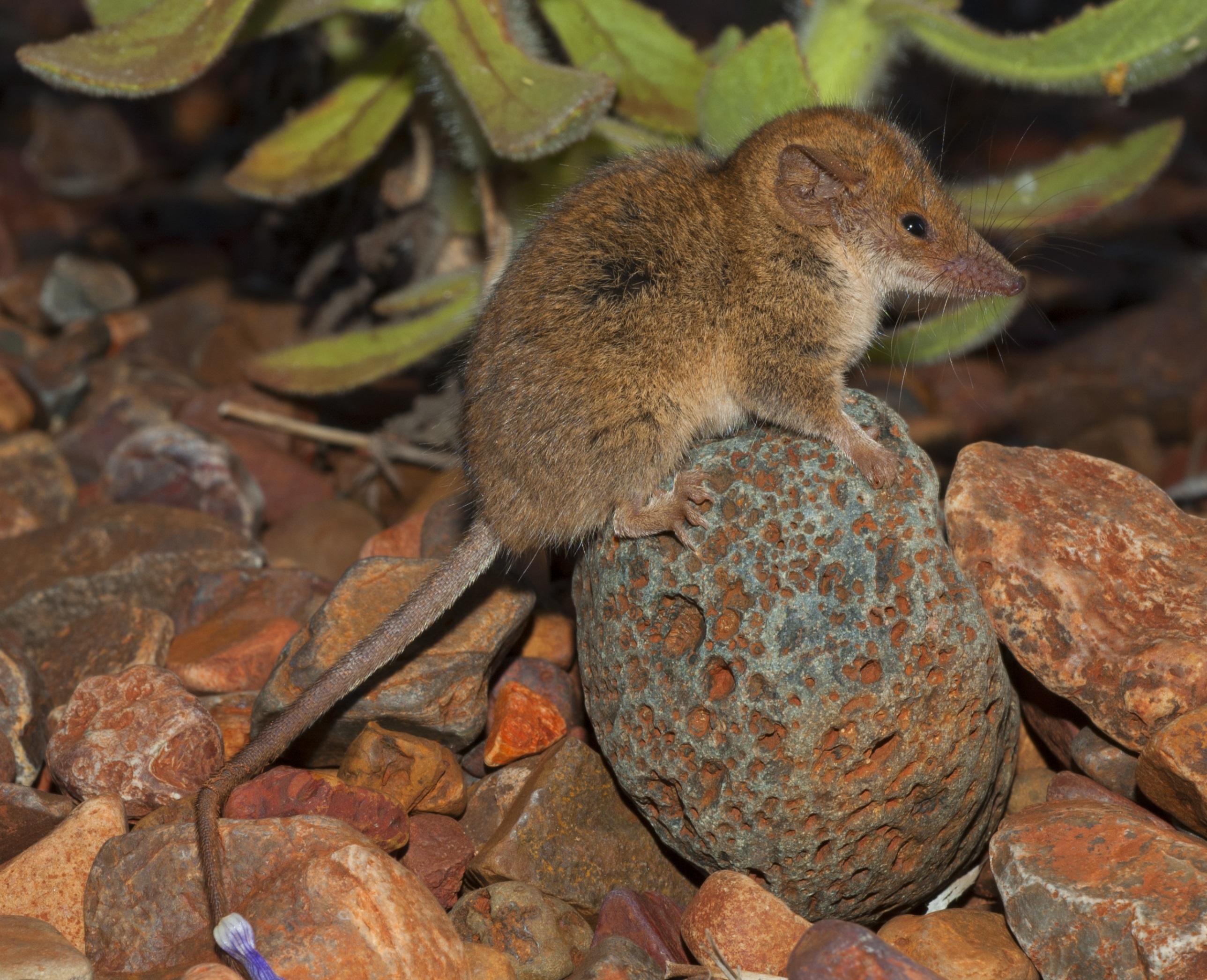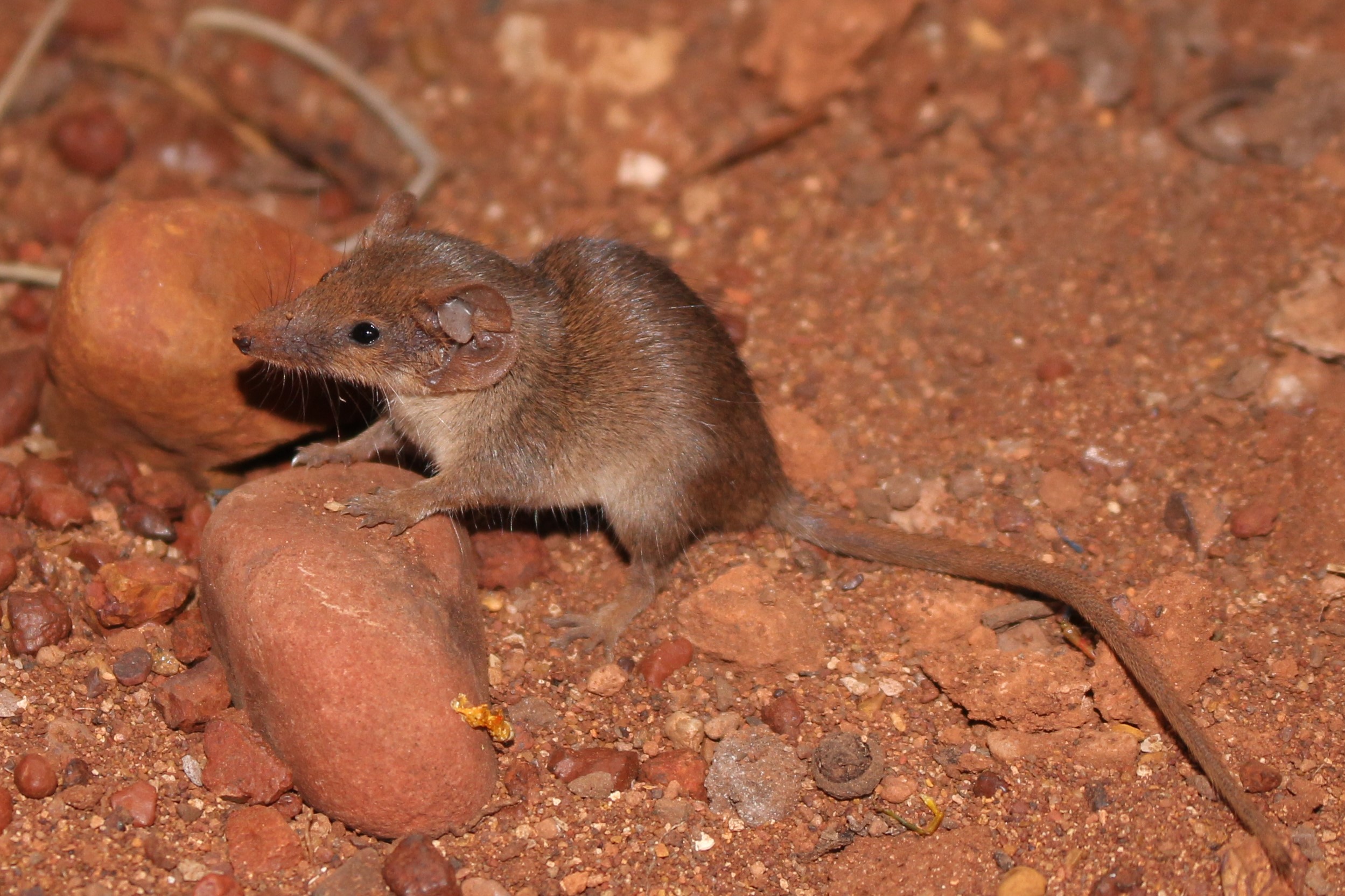Two new species of Australia’s tiniest meat-eating marsupials – planigales – have been discovered by a team led by researchers working at QUT in Brisbane and the Western Australian Museum in Perth.
Until recently there were four types of known planigale species in Australia, but now there are six.
The newly identified desert-dwelling species are both inhabitants of the Pilbara region of north-west Western Australia: the orange-headed Pilbara planigale (Planigale kendricki) and the cracking-clay Pilbara planigale (P. tealei).
The discovery has been published in the journal Zootaxa.
Lead author Dr Linette Umbrello is a postdoctoral researcher with the QUT School of Biology and Environmental Science in the Faculty of Science, and with the Western Australian Museum, and worked with colleagues around Australia including her supervisor Dr Andrew Baker – a mammologist from QUT and the Queensland Museum.

Dr Umbrello said it was exciting for mammologists and taxonomists to discover two new species at a time when mammals across Australia were facing extinction threats from development, climate change and introduced predators.
She said planigales were fascinating animals.
“Planigales are smaller than a mouse, with some weighing less than a teaspoon of water – but they punch above their weight,” Dr Umbrello said.
“They are fierce predators and often take on prey as big as themselves, or bigger.
“The name ‘planigale’ comes from Latin and Greek and literally translates as ‘flat weasel’, which alludes to planigales’ extremely flat heads.

“Of our two new species, the orange-headed Pilbara planigale is the larger, with an average weight of seven grams. It’s an orange colour, as the name suggests, and has a longer, pointier snout.
“The cracking-clay Pilbara planigale is much smaller, averaging just four grams with darker colouration and a shorter face. It has only been found on cracking clay soils, hence its name.
“Both species actively forage during the night for food including grasshoppers, small lizards and other invertebrates, and they take shelter during the day.”

Officially describing any newly discovered animal is often a lengthy process with many formal steps … and the journey to name the new planigales has been no exception.
The process of describing the new species started more than 20 years ago when scientists at the Western Australian Museum began studying survey reports from ecologists in the Pilbara who had captured planigales that didn’t fit existing descriptions of the known species.
Scientists led by the late taxonomist Dr Ken Aplin examined specimens held in the WA Museum and began sequencing their DNA, which suggested there may be two new species.
Since then, many more specimens and genetic samples have been collected from the Pilbara, which allowed Dr Umbrello and colleagues to build on the earlier work, finalise the species descriptions and submit the research for publication – all crucial steps to provide more evidence for the new names to become official.
The new research paper, Hiding in plain sight: two new species of diminutive marsupial (Dasyuridae: Planigale) from the Pilbara, Australia, is authored by Dr Umbrello and Dr Baker, and researchers from the Western Australian Museum, University of Adelaide, South Australian Museum, La Trobe University and Australian Museum.
The research has received funding support from the Australian Biological Resources Study and QUT.
Photo at top: The cracking-clay Pilbara planigale (P. tealei). Photo: Dr Linette Umbrello.







